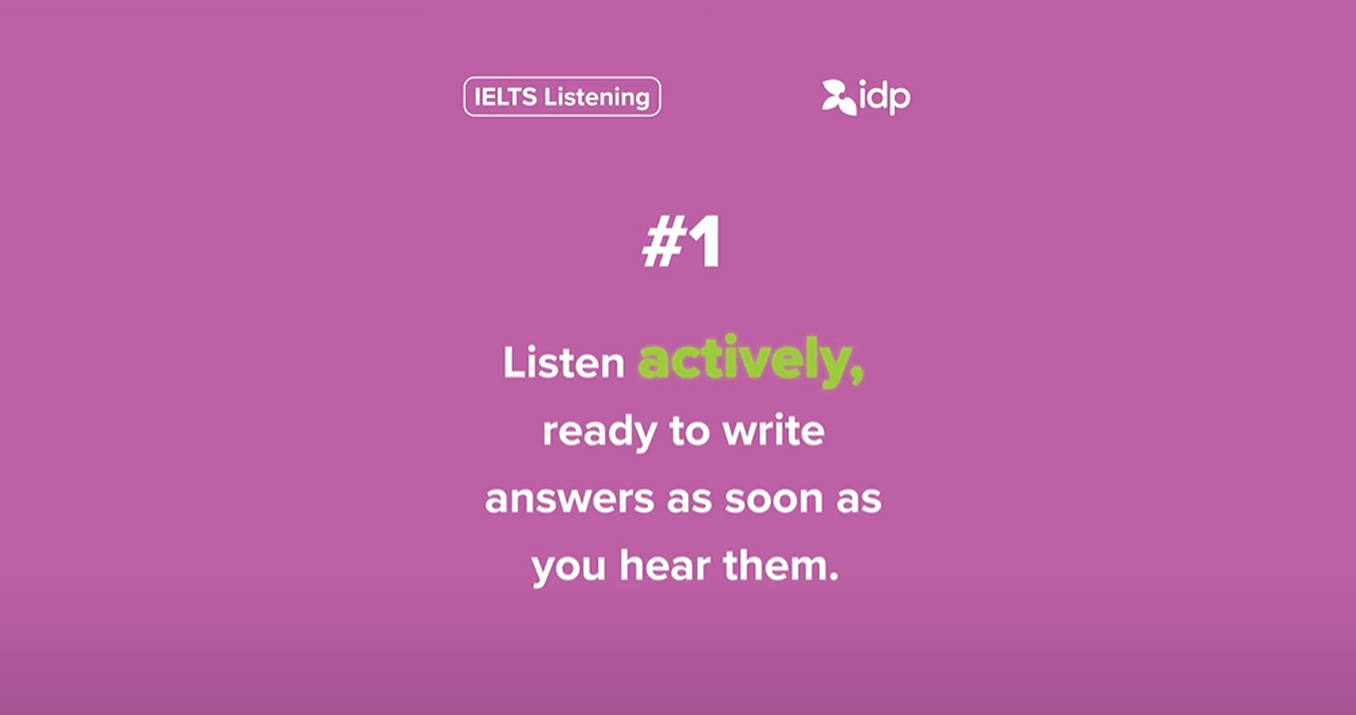IELTS Listening Test: Test Format & Tips
 by IDP IELTS India 25 Apr, 2022
by IDP IELTS India 25 Apr, 2022
The Listening section is the exact same for both versions of IELTS (Academic and General Training). There are a total of four parts. You will hear the recording only once and a variety of voices and native-speaker accents are used.
Section 1: A conversation between two people set in everyday social encounters (For e.g. a conversation about placing food order).
Section 2: A monologue set in an everyday social context (For e.g. a speech about local facilities or about arrangements for meals during a meeting).
Section 3: A conversation amongst multiple people set in an educational or training context (For e.g. a university tutor and a student discussing a project, or a group of people having a discussion).
Section 4: A talk (For e.g. a college lecture)

Here’s a detailed look at the paper on the type of questions one might face:
- Task type 1: Multiple Choice In multiple choice tasks, there is a question followed by three or more possible answers, or the beginning of a sentence followed by multiple possible ways to complete the sentence. Test candidates are required to choose the one correct answer out of all the given choices.
- Task type 2: Matching Test candidates are asked to match a numbered list of items from the listening text to a set of options on the question paper. The set of options given may be criteria of some kind.
- Task type 3: Labelling of plan, map & diagram Test candidates are asked to complete labels on a plan (eg: a building), map (eg: part of a town) or diagram (eg: a piece of equipment). The answers are usually selected from a list mentioned on the question paper.
-
Task type 4: Completion of form, note, table, flow-chart & summary Test candidates are asked to fill in the gaps in an outline of part or of all of the listening text. The outline will mainly focus on the essential ideas/facts in the text. It may be:
- A form: mostly used to record factual details such as names
- A set of notes: used to summarise any kind of information using the layout to show how different items relate to one another
- A table: used to summarising information which relates to clear categories – e.g. place/time/price
- A flow-chart: used to summarise a process which has clear stages, with the direction of the process represented by arrows.
Test candidates may have to select their answers from a list provided on the question paper or identify the missing test from the recording, keeping to the word limit stated in the instructions. Test candidates are not allowed to change the words from the recording in any way whatsoever.
A word limit is given, for example, ‘NO MORE THAN TWO WORDS AND/OR A NUMBER’. Test candidates are penalised for exceeding the word limit, and test candidates should check this word limit carefully for each task. Please note that contracted words will not be tested and hyphenated words count as single words.
- Task type 5: Sentence completion Test candidates are required to read a set of sentences summarising essential information from all the listening text or from a part of it. They then fill a gap in each sentence using information from the listening text. A word limit is given, for example, ‘NO MORE THAN ONE WORD AND/OR A NUMBER’. Test candidates are penalised for exceeding the given word limit. (Test candidates should check this word limit carefully for each task: the limit is either ONE, TWO or THREE words). Similar to the task type 4, contracted words will not be tested and hyphenated words count as single words.
- Task type 6 : Short answer questions Test candidates are asked to read a question and then write down a brief answer using information from the listening text. A word limit is set, for example, ‘NO MORE THAN THREE WORDS AND/OR A NUMBER’. Test candidates are penalised for writing more than the stated number of words. Similar to task types above, contracted words will not be tested and hyphenated words count as single words. Sometimes test candidates are also given a question which asks them to list two or three points.
Scoring
A Band Score conversion table is provided for each type of the Listening test which interprets scores out of 40 into the IELTS 9-band scale.
| Listening |
| Band Score |
Raw Score Out of 40 |
| 5 |
16 |
| 6 |
23 |
| 7 |
30 |
| 8 |
35 |
Scores are reported in either whole bands or half bands. One mark is given for each correct answer in the 40-item test. While writing answers be wary of poor spelling and grammar, since these mistakes are penalized.
Please refer to below practice links for your IELTS Listening test preparation:
 by IDP IELTS India 25 Apr, 2022
by IDP IELTS India 25 Apr, 2022 
